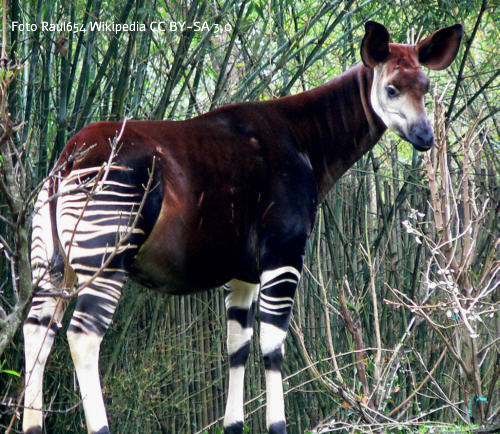
Okapi (Okapia johnstoni)
description of the animal

Appearance
The okapi is a unique animal native to the northeastern rainforests of the Democratic Republic of the Congo in Central Africa. Although it bears striped markings reminiscent of zebras, it is most closely related to the giraffe. The okapi's body is covered in a chocolate to reddish-brown coat, while the legs feature distinctive white and black stripes.
Distribution
The okapi is native to the Ituri Rainforest in the Democratic Republic of the Congo. It is not found naturally outside this region.
Habitat
Okapis are forest dwellers, thriving in the dense rainforests of central Africa. They prefer altitudes of 500 to 1,500 meters and are rarely seen in open areas.
Behavior
Okapis are solitary creatures, coming together only to breed. They are known for their elusive nature, which makes them difficult to observe in the wild. They have a keen sense of hearing and smell, which helps them detect predators.
Diet
Okapis are herbivores, feeding mainly on tree leaves and buds, grasses, ferns, fruit, and fungi. Their long tongues, which can reach up to 18 inches, help them strip leaves from branches.
Reproduction
Okapis have a gestation period of around 14 to 16 months, after which a single calf is born. The calf remains hidden for the first few months of its life to avoid predation.
Threats
Okapis face threats from habitat loss due to logging and human settlement. Poaching and conflict in their native region also pose significant risks to their population.
Short Poems - William Shakespeare